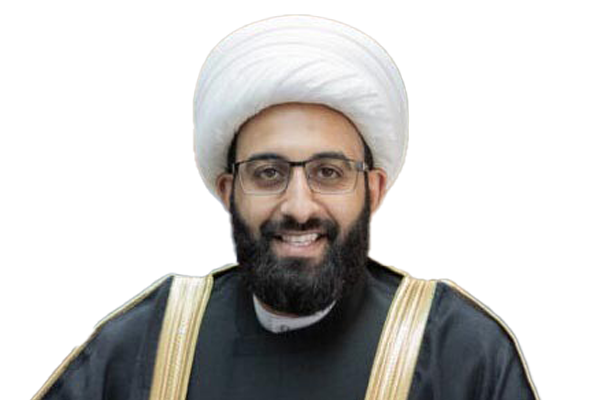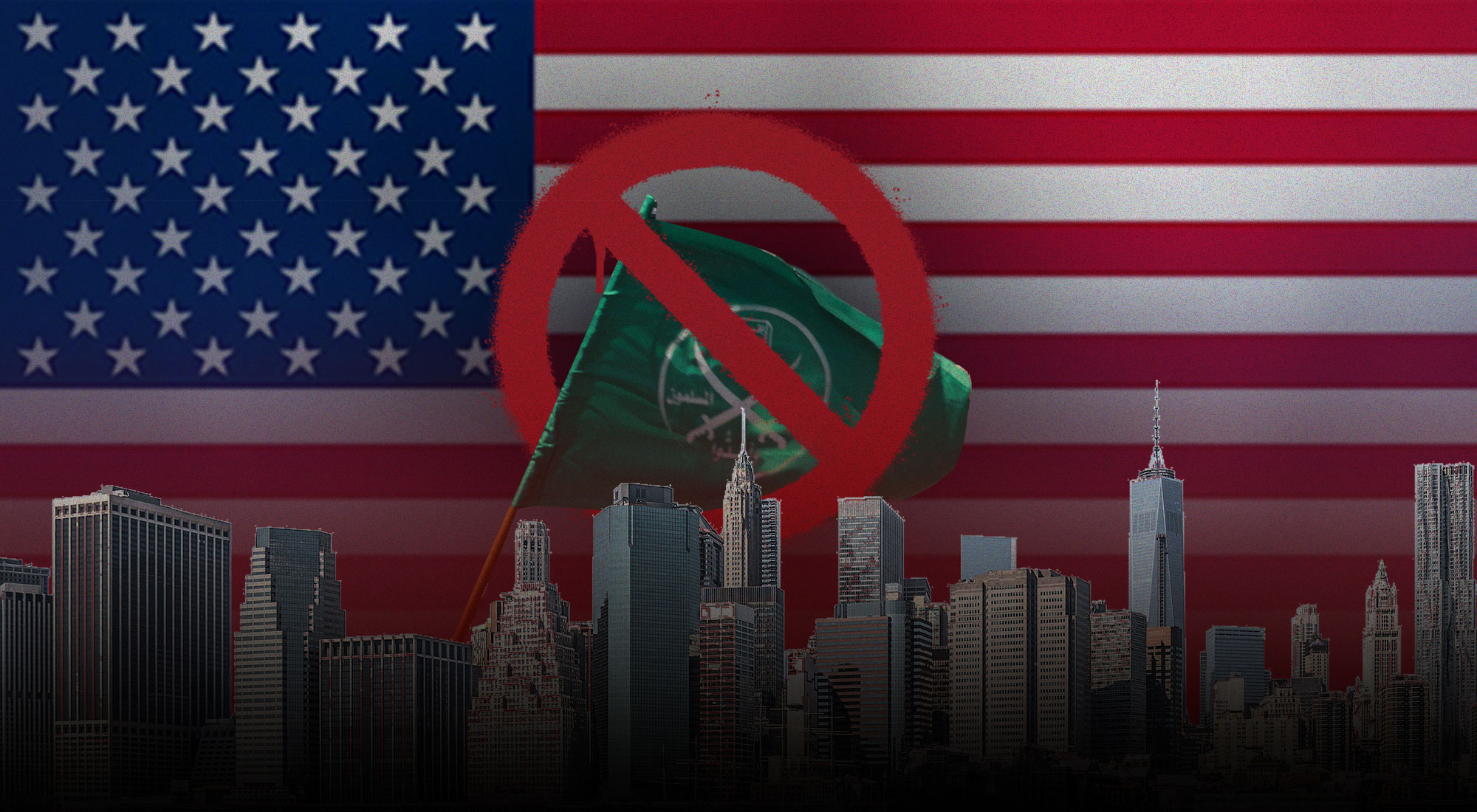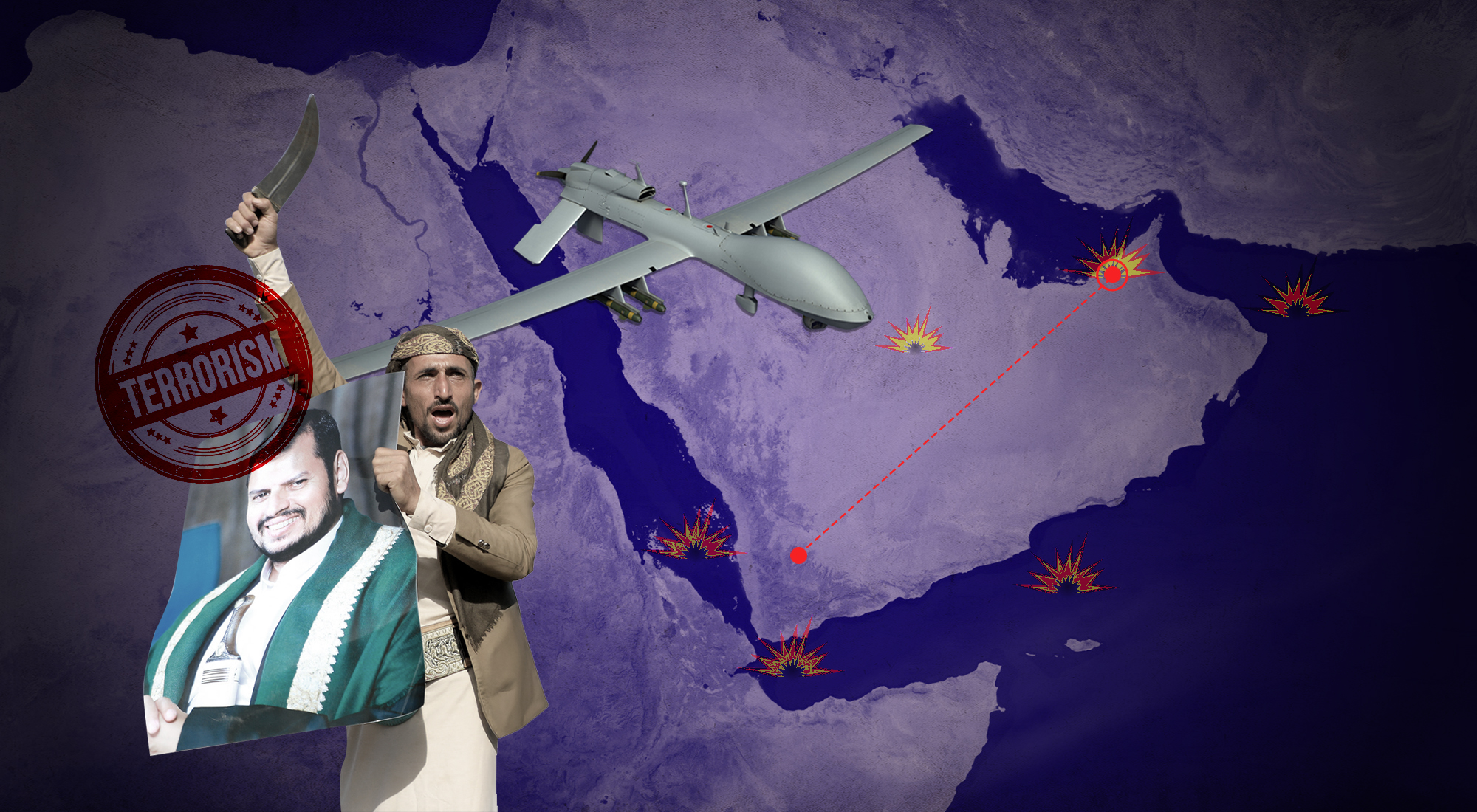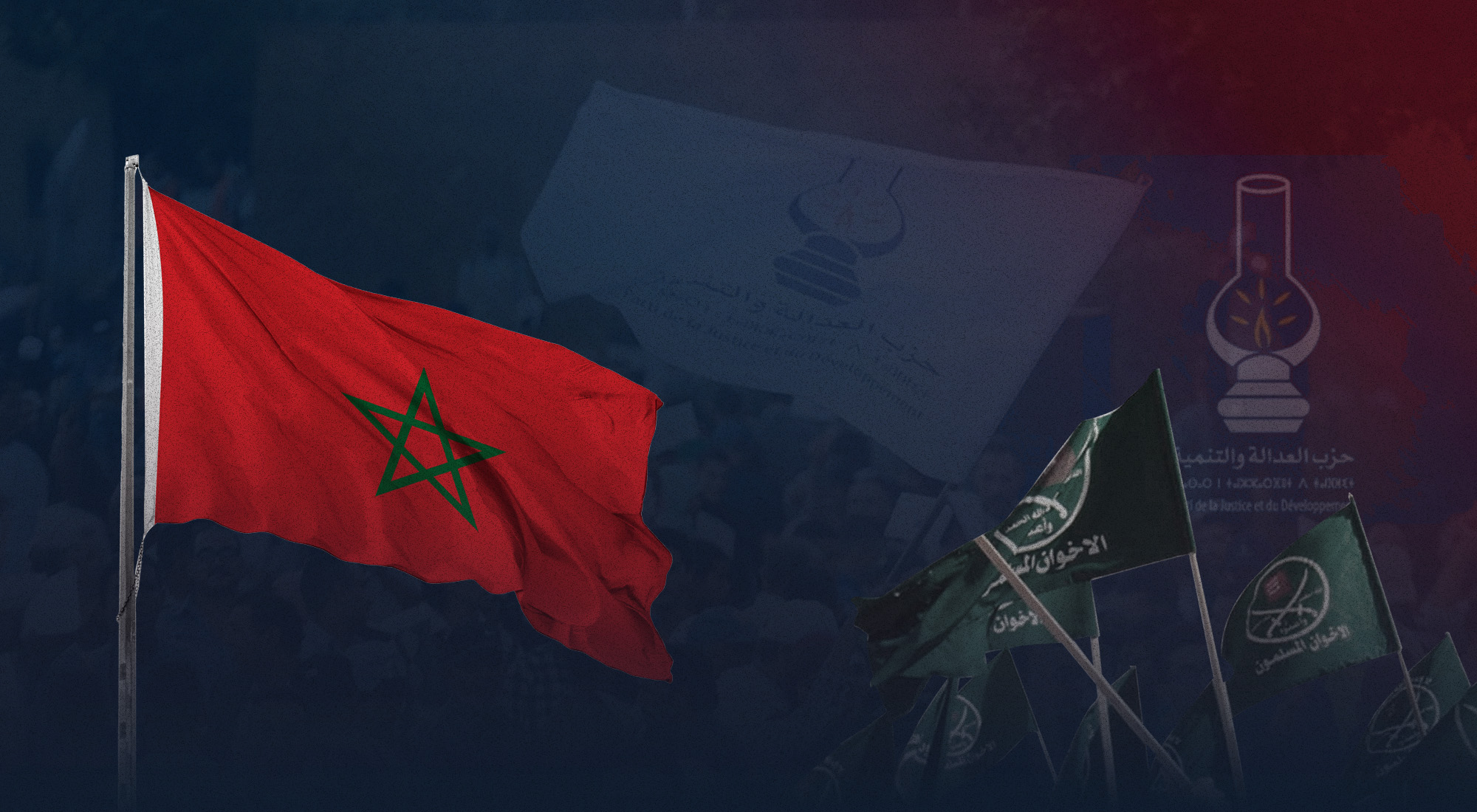This insight offers a comprehensive assessment of Sudan’s ongoing conflict, centering on the leadership of General Abdel Fattah al-Burhan and the militarization of governance under his command of the Sudanese Armed Forces (SAF). It investigates the historical evolution of Sudan’s security establishment, al-Burhan’s rise through the ranks of an Islamist-aligned military system, and the enduring influence of the Muslim Brotherhood and affiliated networks within Sudan’s political and defense institutions.
By placing Sudan’s turmoil within its wider geostrategic context, the study analyzes how the fusion of ideology and military power has destabilized not only Sudan’s internal balance but also the security architecture of the Red Sea region, a critical corridor for global commerce linking Europe, Asia, and Africa. The study examines the implications of Sudan’s instability for international counterterrorism operations, maritime security, and U.S. strategic interests, emphasizing the potential re-emergence of extremist sanctuaries reminiscent of the 1990s.
The analysis outlines a pattern of escalating militarization, ideological entrenchment, and regional spillover. It finds that al-Burhan’s consolidation of power, coupled with the integration of Islamist militias into the SAF, has transformed Sudan from a fragile transition state into a potential hub of transnational insecurity.
The study concludes that without decisive international engagement, Sudan’s descent into protracted conflict could undermine decades of counter-extremism gains and endanger freedom of navigation through the Red Sea. To address these risks, the study calls for a coordinated U.S.-led policy framework grounded in diplomatic pressure, regional coalition-building, and support for a technocratic civilian transition capable of dismantling the ideological and financial networks sustaining the war. These measures, combined with enhanced intelligence sharing and maritime security cooperation, are essential to preventing Sudan’s collapse from cascading into a broader regional crisis.
1. Introduction: An Overview of Sudan’s Ongoing Conflict
Sudan has been engulfed in a devastating civil war since April 2023, pitting the Sudanese Armed Forces (SAF), led by General Abdel Fattah al-Burhan, against the Rapid Support Forces (RSF), a powerful paramilitary group formerly allied with the military but now in open confrontation.[1] This internal strife has produced a severe humanitarian crisis marked by mass displacement, famine, and widespread human rights violations. As of late 2025, more than 12 million people have been displaced, with nearly 4 million fleeing to neighboring countries such as Ethiopia, Chad, and Egypt.[2]
The conflict has claimed tens of thousands of lives, with credible reports of indiscriminate attacks on civilians, including shelling, drone strikes, and ethnically motivated violence in Darfur and Kordofan.[3] The war’s roots trace back to Sudan’s turbulent political history, shaped by decades of military rule, deep-seated ethnic divisions, and successive regimes that privileged Arab and Islamist identities in governance.[4]
Following the 2019 ouster of long-time dictator Omar al-Bashir, a transitional government aimed at guiding Sudan toward democratization was established. However, this process was derailed by a 2021 military coup led by al-Burhan that restored full military control.[5] Analysts note that the current conflict has been aggravated by both external interference and the re-emergence of Islamist factions within the Sudanese military establishment.
The humanitarian toll remains catastrophic. The United Nations Office of the High Commissioner for Human Rights has described the situation as “spiraling out of control,” with famine declared in parts of Darfur and widespread reports of sexual violence, child recruitment, and the destruction of civilian infrastructure.[6] Sudan’s health system has virtually collapsed, heightening risks from diseases such as cholera. Despite repeated ceasefire proposals from regional and international mediators, the fighting persists, with both sides accused of war crimes.[7]
2. Background on General Abdel Fattah al-Burhan
General Abdel Fattah al-Burhan, born in 1960 in a northern Sudanese village to a Sufi family, rose through the ranks of the military under Omar al-Bashir’s Islamist regime (1989–2019). Al-Bashir’s rule was defined by the institutionalization of Sharia law and close alliances with Islamist movements across the region.[8] Al-Burhan held senior military positions, including command roles in Darfur during the early 2000s, when international courts accused the regime of genocide and crimes against humanity. After al-Bashir’s removal in 2019 amid mass civilian protests, al-Burhan became the de facto head of the Transitional Military Council, presenting himself initially as a pragmatic leader open to civilian partnership.[9]
However, his October 2021 coup consolidated military dominance once again. Observers argue that al-Burhan has systematically appointed loyalists, integrated Islamist units into the SAF, and obstructed democratic reform over the past three years.[10] His leadership has been marked by escalation rather than compromise; even amid international calls for restraint, SAF forces intensified operations in Omdurman and Port Sudan, seeking to secure economic hubs vital to regime survival.[11] His refusal to implement or honor ceasefires has been linked to a strategic effort to maintain military supremacy and prevent internal divisions within the armed forces.[12]
3. Timeline of Key Events in al-Burhan’s Rise to Power
The rise of General Abdel Fattah al-Burhan reflects the evolution of Sudan’s military from a national institution into an ideological apparatus shaped by Islamist influence and authoritarian ambition. His early religious upbringing stood in contrast to the militant Islamist environment that would later define his career. His path was shaped by the 1989 coup that brought Omar al-Bashir to power, a takeover orchestrated by Islamist factions (Muslim Brotherhood) within the army and the National Islamic Front. That coup not only entrenched political Islam within the state but also provided al-Burhan a structure in which loyalty to ideology became synonymous with loyalty to the regime.[13]
Throughout the 2000s, al-Burhan’s role expanded as he served in Darfur during one of the darkest chapters of Sudan’s modern history. As a senior field commander, he participated in counterinsurgency operations that were later investigated by international courts for genocide, war crimes, and crimes against humanity.[14] His tenure in Darfur cemented his position within the upper ranks of the military hierarchy and tied his reputation to the regime’s most repressive policies.[15] During this period, al-Burhan’s professional advancement coincided with the consolidation of the military-Islamist alliance that came to dominate every aspect of Sudanese governance, fusing religious ideology with coercive power.
In April 2019, following months of mass protests demanding civilian rule, Omar al-Bashir was ousted after three decades in power. Al-Burhan swiftly emerged as the head of the Transitional Military Council, positioning himself as a pragmatic leader willing to cooperate with civilian forces.[16] However, this image of moderation quickly eroded. His subsequent actions revealed a commitment not to democratic transition but to the preservation of military supremacy. By October 2021, al-Burhan staged a coup against the civilian government, dissolving the transitional council and arresting civilian leaders, effectively reversing Sudan’s fragile progress toward democracy.[17]
The October coup not only reignited political unrest but also paved the way for the militarization of governance under Islamist influence. Al-Burhan restructured the armed forces, integrated Islamist loyalists, and reactivated networks associated with the former Bashir regime.[18] His leadership style prioritized control and ideological alignment over national reconciliation, marginalizing pro-democracy movements and reigniting public distrust in the military establishment. These dynamics culminated in April 2023, when tensions between the Sudanese Armed Forces and the Rapid Support Forces (RSF), a paramilitary force originally allied with the army, erupted into open warfare.[19] The conflict plunged the country into a new phase of devastation, exposing the structural weaknesses that decades of militarized governance had created.
By September 2025, the international community began to articulate a unified stance. The Quad group, comprising the United States, the United Kingdom, Saudi Arabia, and the United Arab Emirates, issued a joint statement urging an end to hostilities and explicitly warning against any future political role for Islamist movements in Sudan.[20] Despite these efforts, the situation continued to deteriorate. By November 2025, while the RSF signalled conditional acceptance of truce proposals, al-Burhan’s forces were accused of rejecting peace overtures in order to preserve their grip on power.[21] His insistence on sustaining military dominance, even at the cost of national collapse, demonstrated the enduring influence of the ideological and institutional legacy he inherited from the Bashir era.
Al-Burhan’s rise thus encapsulates the broader trajectory of Sudan’s decline, from the fusion of Islamism and militarism under Bashir to the current civil conflict that threatens to dismantle the state altogether. His career is both a product and a perpetuator of the alliance between the military and the Muslim Brotherhood, a partnership that has repeatedly derailed Sudan’s aspirations, undermined regional stability, and turned the promise of transition into yet another chapter of destruction.
4. Ties to the Muslim Brotherhood and Islamist Integration in the SAF
The ideological imprint of the Muslim Brotherhood on Sudan’s political and military institutions stretches back nearly eight decades. Originating from Egypt’s Brotherhood movement, founded by Hassan al-Banna in 1928, Sudanese Islamists began adopting its doctrines in the 1940s through student networks and cultural exchanges with Cairo. Over time, this influence evolved from intellectual to structural.[22] Under the rule of Omar al-Bashir (1989–2019), the Brotherhood’s Sudanese offshoot, operating through its political arm, the National Congress Party (NCP), penetrated virtually every state institution, from the civil service to the intelligence apparatus, and most decisively, the armed forces.[23]
The Bashir era institutionalized an ideological merger between Islamism and militarism, embedding Brotherhood-affiliated figures into the Sudanese Armed Forces (SAF) and creating a parallel system of religious indoctrination. Following the fall of Bashir in 2019, many assumed that the Brotherhood’s domestic network had been dismantled; however, subsequent developments indicate otherwise.[24] Reports by policy observers and regional intelligence sources confirm that remnants of the Brotherhood regrouped within the SAF, particularly among mid-level officers and ideological units. This continuity has reinforced an enduring Islamist undercurrent in Sudan’s military leadership, most visibly under General Abdel Fattah al-Burhan.[25]
Al-Burhan is widely regarded as the inheritor of this Islamist legacy. Multiple sources have documented the integration of Islamist militias and Brotherhood-linked combatants into the SAF, effectively blurring the line between professional soldiers and ideological partisans. Clerics associated with the Brotherhood are reported to serve as unit chaplains and propagandists, framing the ongoing war as a religious duty rather than a national conflict. One of the most prominent examples is the Al-Baraa bin Malik Brigade, identified as a Brotherhood-affiliated militia sanctioned by the U.S. Department of the Treasury in 2025 for obstructing democratic processes and supporting al-Burhan’s war efforts.[26] Intelligence assessments further suggest that such groups not only fight alongside regular troops but also provide financial, logistical, and recruitment support, sustaining the regime’s operational capacity despite international isolation.
Although al-Burhan publicly denies formal integration of Brotherhood militants into the SAF, his statements have implicitly acknowledged their presence in military operations. Critics, including Sudanese civilian coalitions and regional analysts, contend that his administration’s repeated rejection of ceasefire initiatives reflects a calculated attempt to protect the Brotherhood’s networks and preserve Islamist leverage within the state. The outcome is a hybrid security structure, combining state soldiers, ideological volunteers, and private militias that has transformed the SAF from a national institution into a sectarian force aligned with Islamist objectives.
This pattern echoes the Brotherhood’s destabilizing behavior across the wider Middle East. In Egypt, Libya, and Tunisia, the group has historically combined political infiltration with armed activism to weaken state sovereignty.[27] In Sudan, this entrenchment poses a renewed risk of reversing counterterrorism progress achieved after 2019, potentially reviving dormant extremist networks and undermining international security cooperation.
5. Strategic Importance of the Red Sea and Emerging Threats
Sudan’s geography grants it a pivotal role in global and regional security. Its 700-mile coastline along the Red Sea places it at the crossroads of maritime routes connecting Europe, Asia, and Africa. The Red Sea corridor handles a substantial portion of global shipping, including trade to and from the port of Eilat, and supports naval operations for Saudi Arabia, the United States, and allied Western forces. Instability in Sudan threatens these vital trade arteries, potentially enabling non-state actors to exploit ungoverned coastal zones for smuggling, arms trafficking, or drone-based attacks.[28]
Under al-Burhan’s rule, Port Sudan, situated on the country’s eastern coast, has emerged as a key strategic and economic bastion. Once a hub for international trade, it now serves as a military logistics center and political headquarters for al-Burhan’s faction.[29] This concentration of power has heightened fears that Islamist-aligned or Iran-linked entities could exploit the area’s instability to project influence across the Red Sea basin. Analysts warn that the deterioration of Sudanese state control may facilitate the expansion of transnational terrorism, mirroring historical precedents in Somalia and Yemen. Weapons flows and militia movements already indicate a troubling regional spillover. The trafficking of small arms and drones through Sudan’s porous borders poses a threat to Egypt’s Sinai Peninsula, the Gulf of Aden, and U.S. military installations in Djibouti.[30] Moreover, the conflict’s ethnic dimension, particularly attacks targeting non-Arab communities, has created fertile ground for extremist recruitment, deepening sectarian polarization and regional insecurity. The convergence of ideology, geography, and economic desperation renders Sudan’s Red Sea coastline one of the most volatile fault lines in contemporary geopolitics.
6. Implications for U.S. Security Interests
For the United States, Sudan’s protracted conflict represents both a humanitarian catastrophe and a growing counterterrorism concern. American intelligence agencies have warned that the continued fragmentation of Sudan risks recreating conditions similar to those that once made the country a haven for terrorist networks in the 1990s. The resurgence of Islamist militias and the integration of Muslim Brotherhood elements into Sudan’s military apparatus have raised alarms within Washington, as these developments could facilitate the re-emergence of extremist safe havens across the Horn of Africa and the Red Sea basin.
In response, the U.S. government has adopted a combination of diplomatic pressure and targeted sanctions. The Treasury Department has imposed measures against Sudanese Armed Forces officials accused of human rights violations, the use of chemical weapons, and collaboration with Islamist militias.[31] Simultaneously, the Department of State has issued multiple travel advisories warning of widespread violence, abductions, and disease outbreaks, underscoring the deteriorating security environment. From a strategic perspective, Washington views Sudan’s instability as a direct threat to U.S. counterterrorism objectives and maritime security operations in East Africa.[32] The country’s proximity to critical waterways such as the Red Sea and the Bab el-Mandeb Strait makes it a potential conduit for arms trafficking, piracy, and extremist mobilization. A failed or fragmented Sudan could jeopardize U.S. military and intelligence operations in neighboring Djibouti, home to the only permanent U.S. base in Africa, and threaten freedom of navigation in one of the world’s most vital shipping corridors.
Beyond the immediate security implications, Sudan’s instability undermines broader U.S. policy goals in Africa and the Middle East, including efforts to promote democratic transitions, counter adversaries’ influence, and sustain regional partnerships with Gulf allies. The reappearance of Islamist networks aligned with the Muslim Brotherhood under al-Burhan’s military patronage signals a regression to an era when Sudan functioned as a hub for extremist coordination. Without sustained U.S. engagement through sanctions enforcement, humanitarian aid, and regional diplomacy, Sudan risks descending into another failed state, undermining decades of American investment in counterterrorism and stability across the region.
7. The Quad’s Diplomatic Response and Challenges
On 12 September 2025, the aforementioned Quad alliance, comprising the United States, Saudi Arabia, the UAE, and Egypt, issued a coordinated diplomatic statement emphasizing Sudan’s sovereignty, the necessity of a humanitarian truce, and the categorical exclusion of the Muslim Brotherhood from any future governance arrangement.[33] The declaration stressed a unified regional stance: that Sudan’s stability cannot be restored through Islamist participation but rather through a credible civilian-led transition.
Despite the RSF’s public willingness to accept truce proposals, al-Burhan’s government has consistently resisted implementation, citing “security priorities” while effectively prolonging hostilities.[34] The Quad’s efforts have been complicated by competing foreign interests, whose strategic and ideological calculations diverge sharply from those of the Gulf and Western partners.
Nevertheless, the Quad’s initiative marks a turning point in collective diplomacy. It reflects growing recognition among regional powers that Sudan’s war is not merely an internal struggle but a proxy battlefield for ideological and geopolitical competition. The challenge moving forward lies in translating consensus into enforcement, ensuring that any negotiated peace excludes extremist actors, secures humanitarian corridors, and rebuilds Sudan’s political institutions on the foundations of neutrality, inclusivity, and accountability.
8. Policy Recommendations
To address the mounting challenges posed by Sudan’s conflict and the resurgence of Islamist influence within its military and political structures, the United States should pursue a comprehensive policy that combines diplomatic pressure, security coordination, and economic leverage. The first imperative is to demand a change in leadership, conditioning international aid, recognition, and diplomatic engagement on General Abdel Fattah al-Burhan’s resignation. Sustained international pressure should be aimed at facilitating the formation of a technocratic civilian government capable of exercising oversight over the security apparatus and dismantling the entrenched networks of patronage that have allowed Islamist actors to thrive. Such a transition would not only restore a measure of legitimacy to Sudan’s governance but also signal to regional powers that political stability, not ideological alignment, remains the foundation of U.S. engagement in the Horn of Africa.
At the same time, Washington must intensify efforts to block ideological infiltration within Sudan’s state and military institutions. Working closely with regional allies, including Egypt, Saudi Arabia, and the UAE, the United States should help establish joint intelligence and financial monitoring mechanisms to identify and disrupt Muslim Brotherhood networks operating within Sudan and its neighboring states. This strategy should include expanding financial sanctions on affiliated charities, shell companies, and individuals engaged in funding extremist activities.[35] The United States must also designate the Brotherhood as a terrorist entity. The objective is to isolate ideological financiers while cutting off the economic lifelines that sustain armed militias and propaganda campaigns.
Given Sudan’s geostrategic position along the Red Sea, the United States should also enhance maritime security cooperation. Establishing a joint multinational task force dedicated to Red Sea patrols, modeled on successful anti-piracy frameworks off the Horn of Africa, would serve to secure vital shipping routes and prevent the smuggling of weapons, oil, and human cargo through Sudanese ports. Such an initiative would complement existing U.S. naval operations and bolster regional confidence in Washington’s commitment to safeguarding international commerce from non-state threats.
In parallel, Washington must restore deterrence by imposing targeted sanctions on senior SAF generals and Islamist financiers directly implicated in human rights violations and obstruction of peace efforts. Sanctions should be paired with the diplomatic isolation of figures who continue to exploit religion for political gain. The message must be clear: extremism, whether in uniform or under the banner of ideology, will not be tolerated. Finally, the United States should strengthen regional alliances that prioritize counterterrorism and democratic governance. Drawing on lessons from Egypt and Libya, where popular resistance eventually rejected Islamist dominance, Washington should align with regional populations and governments seeking to resist ideological tyranny while fostering long-term development partnerships.
Ultimately, the Sudanese people aspire to a stable and sovereign state, yet their path continues to be obstructed by military ambition and the ideological manipulations of the Muslim Brotherhood. Decisive U.S. leadership, through coordinated sanctions, security cooperation, and diplomatic engagement, can help accelerate Sudan’s transition away from extremism, restore confidence in civilian governance, and reinforce the security architecture of the entire Red Sea region.
[1] Center for Preventive Action, “Civil War in Sudan,” Global Conflict Tracker, Council on Foreign Relations, April 15, 2025, https://www.cfr.org/global-conflict-tracker/conflict/power-struggle-sudan.
[2] Devon Cone and Daniel P. Sullivan, “No Model of Refuge: Sudanese Refugees in Egypt,” Refugees International, February 21, 2025, https://www.refugeesinternational.org/reports-briefs/no-model-of-refuge-sudanese-refugees-in-egypt/.
[3] Shewit Woldemichael, “El Fasher: A Bloody New Chapter in Sudan’s Ruinous War,” International Crisis Group. October 31, 2025, https://www.crisisgroup.org/africa/sudan/el-fasher-bloody-new-chapter-sudans-ruinous-war.
[4] Center for Preventive Action, “Civil War in Sudan.”
[5] Gerrit Kurtz, “Power Relations in Sudan after the Fall of Bashir from Revolution to War,” Stiftung Wissenschaft Und Politik German Institute for International and Security Affairs, May 2024, https://doi.org/10.18449/2024RP05.
[6] “”A War of Atrocities:” Sudan Civilians Deliberately Targeted, UN Fact-Finding Mission Reports International Crimes on Large-Scale,” OHCHR, September 5, 2025, https://www.ohchr.org/en/press-releases/2025/09/war-atrocities-sudan-civilians-deliberately-targeted-un-fact-finding-mission.
[7] “Two Years On, Sudan’s War Is Spreading,” International Crisis Group, April 7, 2025, https://www.crisisgroup.org/africa/sudan/two-years-sudans-war-spreading.
[8] “Who Is Al-Burhan, Sudan’s Military de Facto Head of State?,” Al Jazeera, April 16, 2023, https://www.aljazeera.com/news/2023/4/16/who-is-al-burhan-sudans-military-de-facto-head-of-state.
[9] International Criminal Court, “Darfur, Sudan,” ICC, 2019, https://www.icc-cpi.int/darfur.
[10] James Wilson, “Sudan’s Islamist-Militarist Revanchists Prioritise Their Interests over a Just Peace,” Modern Diplomacy, November 7, 2025, https://moderndiplomacy.eu/2025/11/07/sudans-islamist-militarist-revanchists-prioritise-their-interests-over-a-just-peace/.
[11] “Sudan Army Chief Visits Khartoum Headquarters, Vows to Defeat RSF Paramilitary,” Reuters, January 26, 2025, https://www.reuters.com/world/africa/sudan-army-chief-visits-khartoum-headquarters-vows-defeat-rsf-paramilitary-2025-01-26/.
[12] Hamza Hendawi, “Sudan’s Army Welcomes US-Led Peace Efforts but Says Military Mobilisation Will Continue,” The National, November 5, 2025, https://www.thenationalnews.com/news/mena/2025/11/05/sudans-army-rejects-us-ceasefire-bid-amid-humanitarian-crisis/.
[13] Munzoul A. M. Assal, “Sudan’s Popular Uprising and the Demise of Islamism,” CMI (CHR. Michelsen Institute), 2019, https://www.cmi.no/publications/7062-sudans-popular-uprising-and-the-demise-of-islamism.
[14] James Copnall, “Sudan Crisis: Burhan and Hemedti – the Two Generals at the Heart of the Conflict,” BBC News, April 17, 2023, https://www.bbc.com/news/world-africa-65297714.
[15] International Criminal Court, “Darfur, Sudan.”
[16] Center for Preventive Action, “Civil War in Sudan.”
[17] Khalid Abdelaziz, “Seven Killed, 140 Hurt in Protests against Sudan Military Coup,” Reuters, October 25, 2021, https://www.reuters.com/world/africa/military-forces-arrest-senior-civilian-figures-sudan-al-hadath-tv-2021-10-25/.
[18] “Two Years On, Sudan’s War Is Spreading.”
[19] Ibid.
[20] U.S. Department of State “Joint Statement on Restoring Peace and Security in Sudan,” September 12, 2025. https://www.state.gov/releases/2025/09/joint-statement-on-restoring-peace-and-security-in-sudan.
[21] Hamza Hendawi, “Sudan’s Army Welcomes US-Led Peace Efforts but Says Military Mobilisation Will Continue.”
[22] “Reversing Sudan’s Dangerous Coup,” International Crisis Group, October 25, 2021, https://www.crisisgroup.org/africa/sudan/reversing-sudans-dangerous-coup.
[23] “Exclusive: Islamists Wield Hidden Hand in Sudan Conflict, Military Sources Say,” Reuters, June 28, 2023, https://www.reuters.com/world/africa/islamists-wield-hidden-hand-sudan-conflict-military-sources-say-2023-06-28/.
[24] “Sudan’s Calamitous Civil War: A Chance to Draw Back from the Abyss,” International Crisis Group, January 9, 2024. https://www.crisisgroup.org/africa/sudan/sudans-calamitous-civil-war-chance-draw-back-abyss.
[25] Khalid Abdelaziz, “Insight: Sudan’s Islamists Plot Post-War Comeback by Supporting Army,” Reuters, July 25, 2025, https://www.reuters.com/world/africa/sudans-islamists-plot-post-war-comeback-by-supporting-army-2025-07-25/.
[26] U.S. Department of State, “Sanctioning Sudanese Armed Group Leader and Islamist Militia with Links to Iran,” September 12, 2025, https://www.state.gov/releases/office-of-the-spokesperson/2025/09/sanctioning-sudanese-armed-group-leader-and-islamist-militia-with-links-to-iran.
[27] GOV.UK, “Muslim Brotherhood Review: Statement by the Prime Minister,” December 17, 2015, https://www.gov.uk/government/speeches/muslim-brotherhood-review-statement-by-the-prime-minister.
[28] “MAPPING ORGANIZED CRIMINAL ECONOMIES in EAST and SOUTHERN AFRICA,” Global Initiative Against Transnational Organized Crime, July 2025, https://globalinitiative.net/wp-content/uploads/2025/07/Mapping-organized-criminal-economies-in-East-and-Southern-Africa-GI-TOC-July-2025.pdf.
[29] Natalia Tsamalashvili, “Russia’s Naval Base in Port Sudan: A Gateway to Africa and the Indian Ocean,” HORN International Institute for Strategic Studies, May 5, 2025, https://horninstitute.org/russias-naval-base-in-port-sudan-a-gateway-to-africa-and-the-indian-ocean/.
[30] Hager Ali, “The War in Sudan: How Weapons and Networks Shattered a Power Struggle,” GIGA, no. 2, 2024, https://www.giga-hamburg.de/en/publications/giga-focus/the-war-in-sudan-how-weapons-and-networks-shattered-a-power-struggle.
[31] U.S. Department of the Treasury, “Treasury Sanctions Leader of Sudanese Armed Forces and Weapons Supplier,” January 16, 2025, https://home.treasury.gov/news/press-releases/jy2789.
[32] Mostafa El Saiegh, “Can U.S. Sanctions Stop the War in Sudan?,” Alternative Policy Solutions, February 19, 2025, https://aps.aucegypt.edu/en/articles/1473/can-u-s-sanctions-stop-the-war-in-sudan.
[33] “US, Saudi Arabia, UAE, Egypt Propose Roadmap for Sudan Peace,” Reuters, September 12, 2025, https://www.reuters.com/world/middle-east/us-saudi-arabia-uae-egypt-propose-roadmap-sudan-peace-2025-09-12/.
[34] Alan Boswell, “Sudan’s War Is the Shape of Things to Come,” International Crisis Group, October 2, 2025, https://www.crisisgroup.org/africa/sudan/sudans-war-shape-things-come.
[35] U.S. Department of the Treasury, “Treasury Sanctions Leader of Sudanese Armed Forces and Weapons Supplier.”








